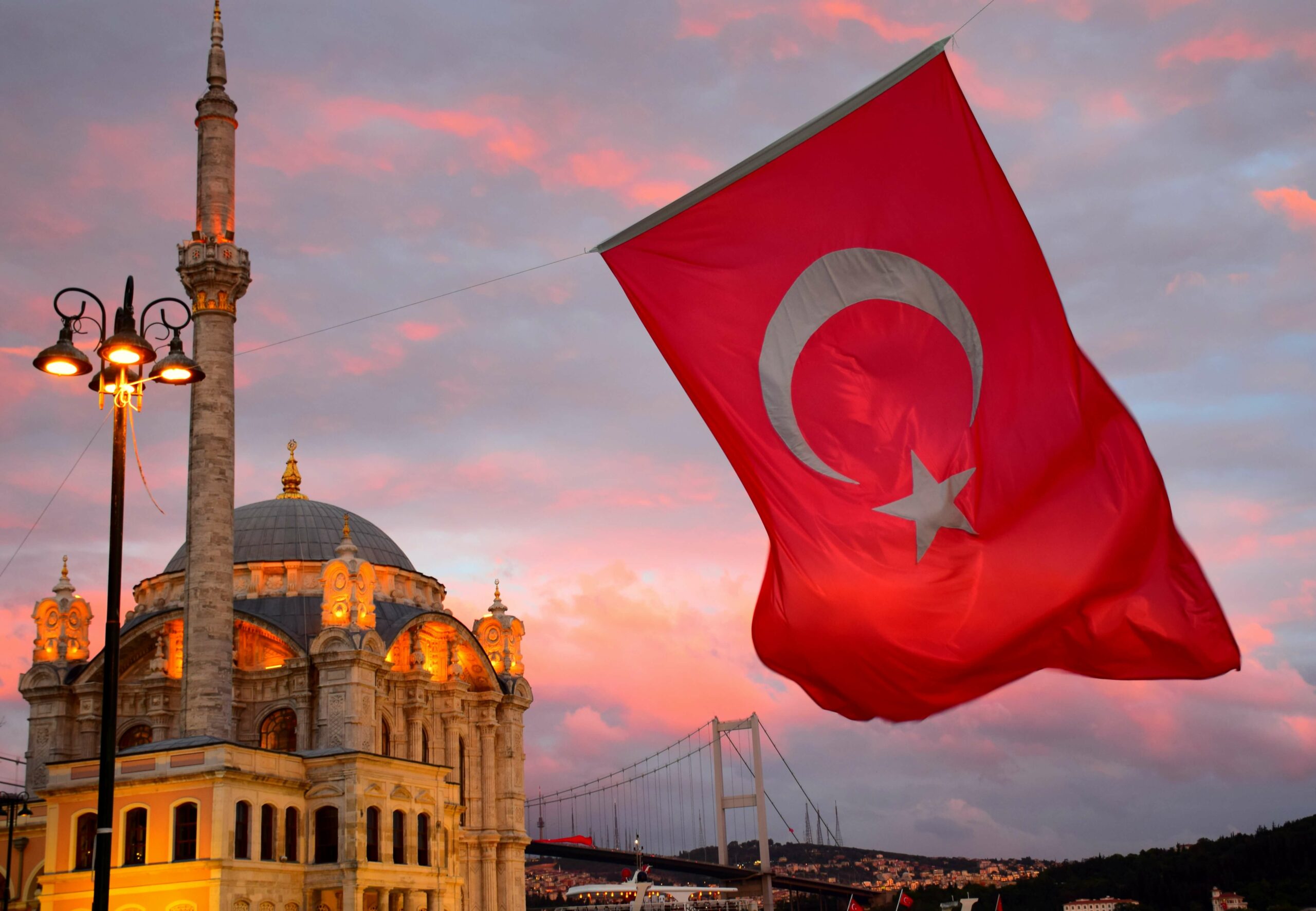Turkey has several wedding traditions, much like any other nation. Turkish people are intensely devoted to their customs, which they preserve across generations through each small wedding tradition.
In Turkey, a wedding is more about family than just the bride and groom. The entire family participates in everything from the engagement process to small details on the wedding day.
Here, we’ve gathered a short sample of Turkish wedding traditions and rituals. Read on to learn about some customs similar to those in the USA and Europe and some that are all their own.
15 Turkish Wedding Traditions and Rituals You Need to Know
1. The “Kına Gecesi.”
This is one of the most vital traditional ceremonies for a future bride. She and her guests gather for a henna ceremony. Everyone dresses festively, and the bride sits in a chair wearing a long red veil that covers her face.
The first part of the ceremony marks the bride’s sadness at leaving her family home, and the hosts play melancholy songs. Then, the future mother-in-law puts a gold coin in the bride’s hands, and the henna painting starts. Once the henna is drawn, cheerful music starts, and everyone dances.
2. El İsteme.
Another traditional ceremony is the custom where the groom asks the bride’s father for his daughter’s hand in marriage. During this ceremony, the groom and his family travel to the bride’s parent’s home with gifts and chocolates.
After the families mingle, the eldest male member of the groom’s family asks the bride’s father for his daughter’s hand, using traditional Muslim phrasing. If the bride’s father agrees, the betrothed exchange promise rings and vows at the end of the ceremony.
3. Coffee With Salt.
This is a silly tradition that nevertheless sends an important message. During the El İsteme, while the groom is sitting with his future parents-in-law, the bride-to-be will bring him a coffee. Usually flavored with sugar, this coffee has salt instead.
The groom must prove himself to be full of fortitude and commitment by drinking the salty coffee without flinching. If the groom can drink the whole cup, he is congratulated. On the other hand, if he coughs or spits it out, guests will playfully mock him for his inability to stomach it.
4. The First Step After “I Dos.”
Turkish wedding traditions are full of superstitions about the marriage to come. One of the most amusing to witness is the first steps after the wedding ceremony. The story goes that the first person to take a step off the altar will have the most power in the marriage.
This means that the bride and groom will sometimes attempt to step over each other’s feet to be the ones to have the final say in their future marriage.
5. Wedding Shoes.
This is a sweet tradition between a bride and her closest female friends. Traditionally, before the wedding, a bride will write the names of her single friends on the bottom of her shoes. Once the wedding is over, the name that is the most faded is the one who will get married next.
This tradition is something like a Turkish version of the bouquet toss–although some more westernized Turkish weddings also include this tradition. Writing friends’ names on shoes is a silly and sentimental way to keep friends involved in intimate wedding traditions.
6. Something Old, Something New, Something Borrowed, Something Blue.
This is one tradition that spans the globe, including Turkey. Just like in the United States, Turkish brides try to wear something old, something new, something borrowed, and something blue during their wedding ceremony.
Something old symbolizes traditions and the bride’s attachment to her family. The new represents the hope a bride has for her future life and family. The borrowed represents that she is trustworthy enough for others to trust her with a valued possession, and the blue symbolizes purity and fidelity.
7. Flag Planting Ceremony.
The entire wedding ritual begins at daybreak with a “flag-planting” ceremony in which the groom also participates. The male members of the wedding party traditionally participate in a morning prayer ceremony before raising a flag on the highest point close to the newlyweds’ residence.
Almost always, the “davul and zurna,” traditional Turkish instruments, accompany these celebrations. In addition, each event must have a soundtrack, which is the responsibility of the players.
8. Decked Out Transportation.
The bride is transported on a horse from her family home to her newlywed residence alongside a jovial procession and a waving Turkish flag, which is given to the groom at her arrival. This is arguably the most spectacular wedding custom in Turkey. Some couples today even adorn their cars.
9. Bridal Arrival.
The way the bride arrives at her wedding ceremony is a big deal. Frequently, “Davul Zurna” musicians are hired to play loud music during the bridal pickup in the street. Zurna is a wind instrument with a bell in the shape of a funnel, and Davul is a large drum. The groom waits at the venue for his beloved while the band plays during her journey.
The bride’s father customarily wraps a red ribbon around her waist. This ribbon represents the bride’s purity while also bringing luck and fortune. The wedding guests usually line the street when the bride is approaching and dance along with the Davul Zurna.
10. Nişan.
The Nişan is the traditional engagement party that happens before impending nuptials. The bride’s family typically foots the bill for this party, which will be hosted in a venue fitting the couple’s style.
Those looking for a more intimate event will have the party in the bride’s family home. Others who want larger events might rent a restaurant or even an entire wedding venue for the party. The number of attendees is unrestricted, and 500 or more guests are not unusual in rural areas.
11. The Groom’s Meal (Keşkek).
A typical Turkish wedding will also include separate receptions hosted by the bride’s and groom’s families, especially in rural areas.
The most common dish served at these wedding receptions is “keşkek,” a dish resembling a stew made of barley and chicken during special ceremonies in Turkey. It is so fundamental to Turkish culture that UNESCO put it on its list of Intangible Cultural Heritage in 2011.
The groom and his buddies must grind the barley in the days preceding the wedding before patiently preparing the dish. The groom undertakes this grueling work to show his commitment to working through his new relationship.
12. Important Dates.
The summer months are regarded as the best time to hold a wedding in Turkey, as is the case in many other nations, with August and September being the most popular months.
This is especially true if both national and religious holidays—Ramadan Bayram, also known as Eid al-Fitr, and Qurban Bayram, popularly known as Eid al-Adha—occur during the summer. However, there is a belief that weddings should not take place in the month between these two holidays, so securing a venue is very competitive.
13. Söz Kesmek.
In Turkey, the promise ceremony is known as a “söz kesmek.” Simple rings, not the ones for engagement, are connected by a crimson ribbon. The rings are then presented to the engaged couple on a silver platter, and the betrothed put them on one another. After cutting the red ribbon, the celebration is over.
This ceremony also includes the “nişan bohcasi” gift-giving ceremony, intended for families to show their appreciation for each other. It usually contains practical gifts and everyday items for after the wedding, such as perfume, slippers, pajamas, clothes, shoes, makeup, towels, shaving utensils, and similar items.
The most traditional families will wrap the gifts in large scarves and present the bundle to the partner’s family.
14. Gold-adorning Ceremony.
The gold-adorning ceremony is one of the most anticipated rites of Turkish weddings. Before sitting for the meal, the bride and groom make their way from table to table to greet their guests.
Each guest bestows gold or a small gift to the couple, either by putting it in a small basket or pinning it to red ribbons on the bride and groom’s outfits.
15. The Wedding Party.
During Turkish wedding parties, many small traditions encompass the day, including:
- Just like in the United States, the bride and groom open the dancing with a romantic dance alone. Then, they welcome the rest of the guests onto the dance floor with traditional Turkish music.
- Once the wedding is over, the newlyweds leave the party space in the same car or sometimes the horse-drawn carriage they arrived in. Then, all of the guests come outside to wish the couple a happy marriage.
- The wedding cake has multiple layers, and the bride and groom cut the first piece together. Then, the couple feeds each other the first slice before sharing the rest with guests.
- Similar to the head table for the wedding party in some Western traditions, during the wedding salon, the bride and groom are seated at their table, where all guests can see them from their seats.




